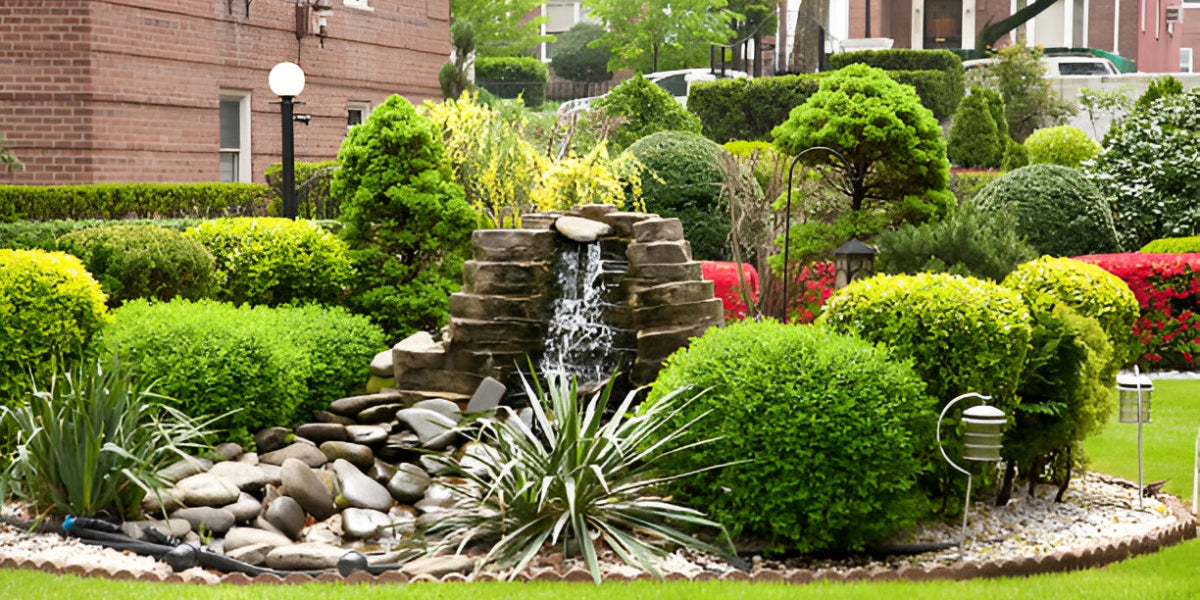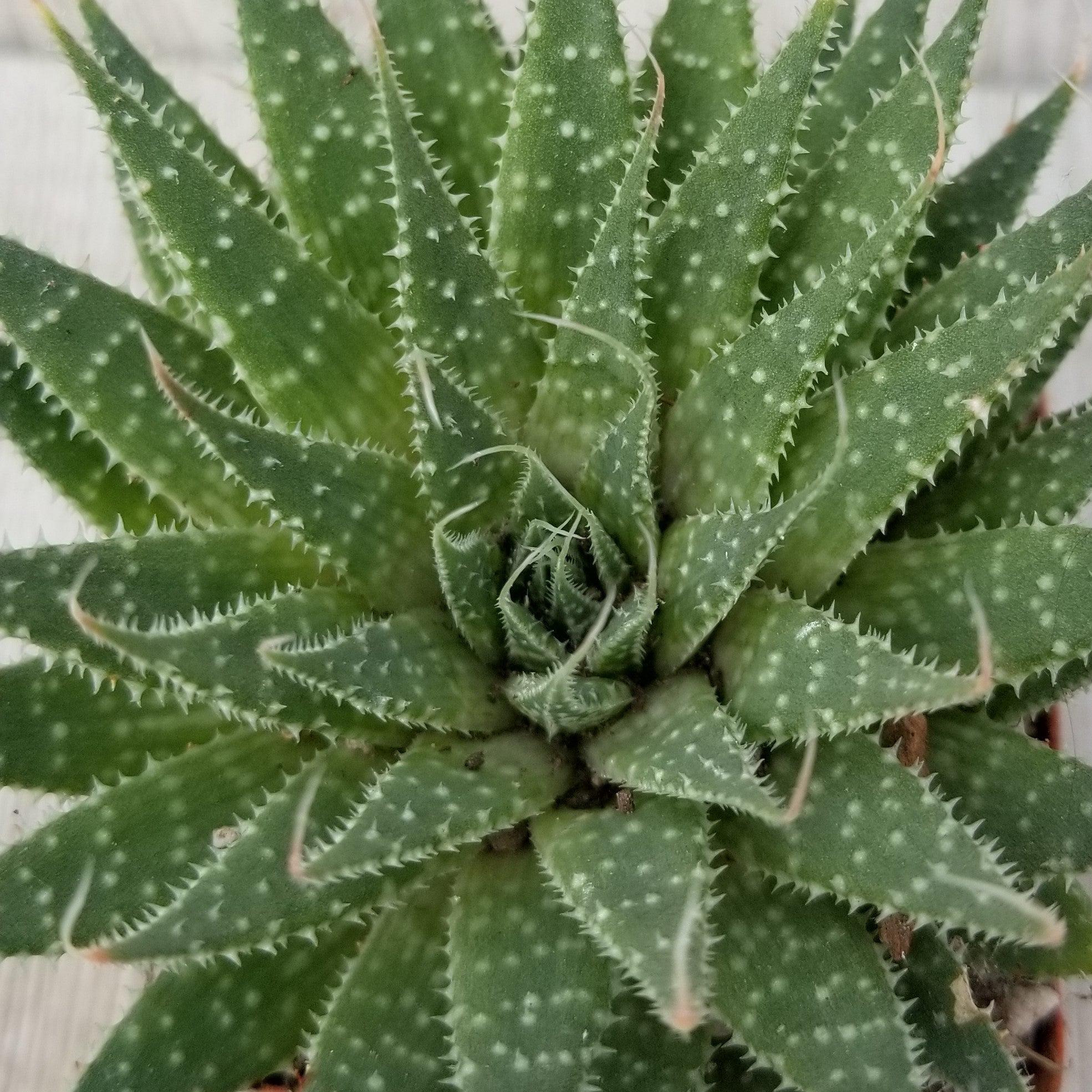Fairy Castle Cactus 'Acanthocereus tetragonus' - Everything You Need to Know!
Updated: January 28, 2025

Step into the whimsical world of Planet Desert as we embark on a journey to explore the captivating beauty of the Fairy Castle Cactus, also known as Acanthocereus tetragonus. This mesmerizing cactus is sure to cast a spell on any plant lover with its unique and intricate growth pattern.
The Acanthocereus tetragonus fairy castle cactus gets its scientific name from the Greek word Akantha. It means ‘thorny.’ The fact that the cactus has a thick growth of spines led the discoverers to name it Acanthto. As a part of the Cactaceae family, Acanthocereus tetragonus, or Cereus tetragonus, is an exciting addition to your cacti collection.
It is called Fairy Castle Cactus because of its multiple branches that are curved to give the appearance of towers, turrets, and intricate architectural details of a castle. Each stem of this cactus is lined with numerous ridges, creating a stunning display that resembles a fairytale fortress.
The other common names of these fairy castles are triangle cactus, sword pear, or barbed wire cactus. Whether you're an experienced cacti collector or just starting out with your green thumb, keep reading for all the top tips on caring for your new fairy castle cactus beauty!
Fairy Castle Cactus Physical Characteristics

One of the most fascinating aspects of the fairy castle cactus is its growth habit.
When young, it starts as a single columnar stem, resembling a miniature tower.
As it matures, new stems from the sides, branching out in a tiered fashion, just like the towers of a castle. The fairy castle cactus is also known for its white spines that contrast beautifully against its green stems.
This majestic cactus, originating from northern and southern America, Mexico, Florida, the Caribbean, Central America, and the Rio Grande Valley, can reach 6 feet tall (22 feet tall in its native habitat), making it a stunning addition to any plant collection.
With its striking vertical growth and unique ribbed texture, the fairy castle cactus is sure to be a focal point in any indoor or outdoor garden. Its white spines contrast beautifully against its green stems, adding to its visual appeal.
Fairy Castle Cactus Flowers
The flowers of Acanthocereus tetragonus open at night and close when the sun comes out. As a result, these night-blooming cereus plant flowers attract hummingbird moths. They have large, white flowers that last for just one day.
When grown indoors, they rarely bloom unless the conditions are ideal and the plant has matured sufficiently, which can take ten years or more.
The typical fairy castle cactus bloom has greenish-white outer tepals and pure white inner tepals. The pistil is creamy white. The flowers are pretty and colorful. The center is a deep reddish orange. These blooms, though rare, are a sight to behold as they open up to reveal stunning white or pale pink petals. They may be sold with bright pink, red, or yellow flowers, but these are fake flowers glued or pinned to the cactus stems.

Fairy Castle Cactus Care & Growing Tips
This is a drought-resistant cactus plant that is great for beginners. The Fairy Castle Cactus thrives in bright, indirect sunlight, making it perfect for both indoor and outdoor settings. The very slow-growing plant does not need much care. Fairy castle cactus care is easiest in winter when you can cut in half the amount of water the plant receives. However, you should pay attention to the following conditions:
Quick Reference

Bloom Season

Flower Color

Growth Rate

Hardiness Zone

Mature Size

Plant Type

Sun Exposure

Toxicity

Watering Needs
Watering Needs: How to Hydrate Your Fairy Castle Cactus
The fairy castle cactus is a drought-resistant plant and can withstand long dry spells and heavy rain. The watering requirements of the cactus are typical of the Cactaceae family. They store water indoors, waiting for the next rainfall. They do not need much water, nor do they need regular watering. However, being a plant, they do need some watering.
When it comes to water, use the soak-and-dry method, allowing the soil to dry out between waterings. Water in the spring and summer, slow down in the fall, and water sparingly in the winter. Keep your fairy castle cactus dry until spring.
Overwatering can cause root rot, causing the fairy castle cactus stems to become soft and mushy, causing drooping, yellowing, and browning of the base. If unsure, don't water yet, as underwatering is easier to fix than overwatering.
Remember, between two rounds of watering, ensure that the soil is completely dry. Soggy soil or water standing at the root can cause parasitic or mealybug growth. This will cause the cactus to perish faster than you realize.
Understanding the Fairy Castle Cactus Light Requirements
If growing indoors, place your fairy castle cactus in a bright, sunny location with at least 6 hours of (indirect) sunlight.
To ensure your fairy castle cactus receives enough natural, bright light, consider using grow lights and avoiding direct afternoon sunlight, especially on hot summer days. Protect your fairytale castle cactus during midday hours and move it away from windows if it turns red or brown.
When growing outdoors, the fairy tale cactus needs full sun to thrive for at least 4-6 hours daily. In other words, this is a full-sun plant.
If your Acanthocereus tetragonus is not exposed to plentiful sunlight, the color of the stems will start to fade; you will find them turning yellow.

Another sign of inadequate sun exposure is the abnormal growth of the stems. This does not mean that it will have stunted growth indoors. The cactus has healthy growth in partial shade, too.
Dry, brown spots may indicate sunburn, which cannot be fixed. Use a sheer curtain to protect your plant from direct sunlight. If your plant is too tall and floppy in too much shade, move it closer to the window for more light.
A Guide to Perfect Soil & Balanced Fertilizer for Your Cactus
The fairy castle cactus likes very airy, porous, nutrient-rich, a well-drained soil with a pH of 5.6–6.5, which mimics its native habitat. Cacti require well-drained soil that dries completely between waterings. Your soil must have a sandy texture and a low water-holding capacity, just like desert soil. Soggy, wet soil can damage your cactus and contribute to bacterial and fungal rot. In addition, because of a lack of oxygen, soggy soil substitutes air pockets with water, resulting in an anaerobic environment that can kill your Acanthocereus plant.
Ideally, you want to use our specialized cactus potting mix that is well-drained soil and contains five natural substrates and organic mycorrhizae to promote the development of a strong root system that helps your cactus thrive.
Pro Tip
As an alternative, you can create your own potting mix by combining equal portions of perlite, coarse sand, and good natural potting soil.
When it comes to fertilizing the fairy castle cactus, a balanced (5-10-5) NPK fertilizer can be applied once a year in the spring during the growing season. It's important to remember that cacti have low nutrient requirements, so it's best to use a diluted fertilizer or follow the package instructions carefully.
In addition to a balanced fertilizer, it's important to keep in mind that cacti are adapted to survive in nutrient-poor environments. Therefore, it's crucial not to overfertilize, as this can lead to excessive growth and weaken the plant's structure. Always err on the side of caution and use fertilizer sparingly to avoid any potential harm to your fairy castle cacti.

An Optimal Temperature & Suitable Hardiness Zone for Your Cactus
When growing indoors, this cactus thrives in temperatures ranging from 70-100°F during the day and slightly cooler temperatures at night. It's important to avoid exposing it to temperatures below 50°F to prevent damage. In terms of humidity, the fairy castle cactus is quite adaptable and can tolerate typical indoor humidity levels.
For outdoor cultivation, this low-maintenance Fairy Castle Cactus is typically hardy in USDA hardiness zones 9 to 11. It is sensitive to frost, and if the outdoor temperature falls below 32°F, it is best to take the plant indoors. It prefers temperatures on the warmer side and can tolerate high heat, but it's important to protect it from extreme cold drafts.
In terms of humidity, the Fairy Castle Cactus is adapted to low-humidity environments. It can tolerate dry air and does not require high levels of humidity to thrive. However, it's important to provide adequate air circulation to prevent the buildup of excess moisture around the plant, as this can lead to fungal issues.
Fairy Castle Cactus Repotting

The fairy castle cactus is a slow grower, so repotting it every 2–3 years in the spring is usually enough.
This is because the roots of this fairy castle grow in all directions and need enough space for proper growth.
If your fairy castle cactus has grown too large, repot it in a larger, unglazed clay pot in the spring.
Avoid placing it in a pot that is too large, as the soil will stay wet. Make sure that the new pot is 1 to 2 inches bigger than the potting mix.
Use a well-draining potting mix, either purchased or prepared by mixing soil with perlite or pumice. Ensure the new pot has drainage holes to prevent excess water from drowning the roots.
Remember, you need to use tongs or gloves to protect yourself from spines when repotting.
Propagation of the Acanthocereus Cactus
The best way to propagate the fairy cactus is via seeds or stem cuttings. Propagating fairy castle cactus has a higher success rate with stem cuttings.
By Cuttings
- First sterilize a sharp pair of gardening scissors or a knife.
- Select stems with a good balance of thickness and flexibility. Avoid taking cuttings from weak or damaged stems. Cut 2-4 inch sections from the tips of the stems, just above a node (where a spine or branch meets the stem).
- Let the cut ends dry out for 1-3 days to form a callus, reducing the risk of root rot.
- Plant the cuttings in well-draining soil, burying them up to the first node (where you made the cut). Firm the soil gently.
- Water lightly, as the cuttings are prone to rot if the soil is too moist. Place the potted cuttings in a warm, bright location (but not direct sunlight).
- Roots should develop within 1-3 months. Wait until the new plants are established before repotting.
- Once the new plants are growing well, transplant them into individual pots with fresh, well-draining soil.

By Seeds
- The fruits of the cactus bear seeds. These can be sown in a cactus potting mix.
- Fill a small pot or seed tray with a well-draining seed starting mix.
- Plant the seeds about 1/8 inch deep and 1/4 inch apart in the soil. Cover with a thin layer of soil.
- Water gently but thoroughly. Make sure the soil is consistently moist but not waterlogged. Place the pot or seed tray in a warm location (around 70-80°F) with bright, indirect light.
- Cover the pot or seed tray with a clear plastic bag or cloche to maintain humidity and promote germination.
- Seeds typically germinate within 1-3 months. Once seedlings have 2-3 sets of leaves, transplant them into individual pots with fresh, well-draining soil. Provide seedlings with careful watering, fertilization, and pruning to promote healthy growth.
Note: Keep in mind that Fairy Castle Cactus seeds can be slow to germinate and may require patience and careful attention. Additionally, seed-grown plants may take longer to reach maturity compared to cuttings.
Pests & Common Problems of Fairy Castle Cactus
Fairy Castle Cactus is a fairly easy plant to care for, but like any cactus plant, it can be susceptible to pests like mealybugs, scale insects, and other common problems. Here are some of the most common issues you might encounter with your Acanthocereus tetragonus:
Pest attack: To prevent these pests from infesting the fairy castle cactus, it is important to keep the plant in a clean environment and avoid overwatering, as this can create a humid environment that is conducive to pest infestations. If pests are present, they can be treated with insecticidal soap or neem oil, which are effective at killing pests without harming the plant.
Wilting: This can be caused by either too much or too little water. As the plants grow new leaves, older leaves eventually die and fall off, leaving a clump of leaves at the ends of naked stems on old plants. If you notice the leaves of your black rose succulent wilting, you will need to adjust your watering schedule accordingly.
Rot: This can be caused by overwatering or excessively wet soil. If you notice stem or root rot, you will need to remove the affected parts of the fairy castle plant and allow it to dry out completely before replanting.
Turning Red: The red coloration on your fairy castle cactus could be due to a few reasons. One possibility is that it is receiving more sunlight than it needs, causing it to develop a reddish tint as a stress response. Another possibility is that it is experiencing cold temperatures, which can also lead to a reddish hue. To help your cactus regain its normal color, try providing it with a bit of shade or moving it to a warmer location.
Fairy Castle Cactus Uses & Benefits
Since the fairy castle cactus with or without flowers looks amazing, one of its top uses is for ornamental reasons. If you have a garden outdoors, this cactus species can make the place look aesthetically graceful. You can also plant the cactus as a fence, with its spines protecting your backyard. The cactus is consumed as a vegetable in its native place. It can be directly consumed or cooked and then eaten. The fruits of the Cactus tetragonus are edible and have a sweet taste. You can bring it indoors too, especially the miniature variety. It makes for a good addition as a houseplant in your living room or terrace garden.
Where to buy a Fairy Castle Cactus?
When it comes to buying a fairy castle cactus, unless you have a local nursery that specializes in cactus and succulents; then you may have a hard time finding Acanthocereus tetragonus plants near you.
Here at Planet Desert, we have the world's largest selection of Cactus & Succulents that can be shipped anywhere in the United States and are guaranteed to arrive happy & healthy.
Fairy Castle Cactus Quick Reference Growing Guide
| Bloom Season | Summer (blooms at night) |
|---|---|
| Botanical Name | Acanthocereus tetragonus |
| Common Name | Fairy castle cactus, triangle cactus |
| Dormancy | Winter |
| Family | Cactaceae |
| Flower Color | White |
| Genus | Acanthocereus |
| Growth Habit | Columnar cactus |
| Growth Rate | Slow |
| Hardiness Zone | 9, 10, 11 |
| Mature Size | Up to 6 ft. tall |
| Native Area | Mexico |
| Plant Type | Perennial cactus |
| Propagation | By stem cuttings, seeds |
| Resistance | Drought resistant, heat tolerant, pest resistance |
| Soil PH | 6.5, Acidic, Neutral |
| Soil Type | Cactus specialized potting mix soil |
| Special Features | Easy to maintain |
| Sun Exposure | Full sun, partial shade |
| Toxicity | Mildly toxic to humans, mildly toxic to pets (Keep away from children) |
| Watering Needs | Low |
Final Thoughts
Overall, the Fairy Castle Cactus (Acanthocereus tetragonus) is a captivating and unique succulent that boasts a striking, castle-like appearance. With its robust, columnar stems, vibrant green color, and delicate, lace-like spines, this cactus is a true showstopper. Relatively low-maintenance and easy to care for, the Fairy Castle Cactus thrives in well-draining soil, moderate watering, and bright, indirect light. Whether grown as a standalone specimen or combined with other succulents, this enchanting cactus adds a touch of whimsy and beauty to any setting, making it a beloved choice among cactus enthusiasts and succulent aficionados alike.
Frequently Asked Questions
-
Does fairy castle cactus bloom?
Acanthocereus tetragonus, a night-blooming cereus plant, attracts hummingbird moths with its large, white flowers that last for one day. Growing indoors, they rarely bloom unless ideal conditions and maturity are met. The typical fairy castle cactus bloom features greenish-white outer and inner tepals. In most cases, the Acanthocereus tetragonus flower does not appear for a long time. In other words, it takes time for the plant to bear flowers. But once it does, the charming white flowers can take your breath away.
-
How does the Fairy castle cactus get its name?
The Acanthocereus tetragonus fairy castle cactus gets its name from the Greek word Akantha; which means ‘thorny. It is called Fairy Castle cactus because of its multiple branches that are curved to give the appearance of towers, turrets, and intricate architectural details of a castle. Each stem of this cactus is lined with numerous ridges, creating a stunning display that resembles a fairytale fortress. The other common names of these fairy castles are Triangle cactus, Sword-pear, or barbed wire cactus.
-
Why is my Fairy Castle Cactus yellow?
Though cacti are drought-resistant, if your fairytale castle cactus is turning yellow, there could be several reasons why your fairy castle cactus is yellow. One possibility is that it is not receiving enough sunlight, as cacti generally require bright light to thrive. Additionally, yellowing could be a sign of overwatering, as cacti prefer dry conditions and can suffer from root rot if their soil remains too damp.
-
Where can I buy Fairy Castle cacti for sale?
Acanthocereus tetragonus can be ordered from online cactus and succulent stores like Planet Desert. Ensure that you get the fairy cactus for sale from the best store online so that it arrives in the right condition.
-
Where does the fairy castle cactus come from?
The fairy castle cactus, also known as the Acanthocereus tetragonus, originating from northern-south America, Mexico, Florida, the Caribbean, Central America, and the Rio Grande Valley, can reach 6-22 feet tall, making it a stunning addition to any plant collection. It thrives in warm and arid climates, typically found in rocky or desert-like habitats in USDA zones 9-11.
-
How fast do fairy cacti grow?
Fairy cacti, also known as Acanthocereus tetragonus, have a relatively slow growth rate compared to other cactus species. On average, they can grow about 1-2 inches per year. Cacti can live up to 200 years, with the Fairy Castle Cactus typically lasting 20-30 years under suitable conditions. However, factors such as environmental conditions and care practices can influence their growth rate.















